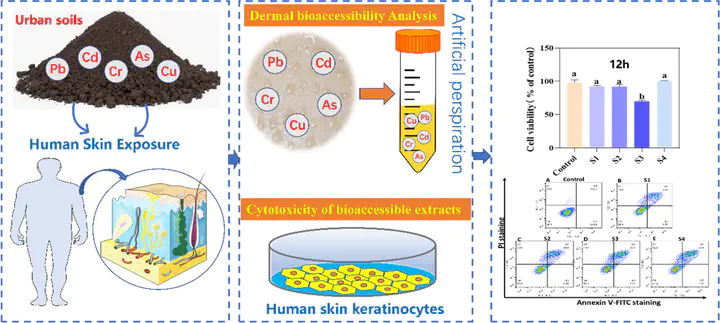Dermal bioaccessibility and cytotoxicity of heavy metals in urban soils from a typical plateau city: Implication for human health

Abstract
The dermal exposure of heavy metals in contaminated urban soils poses huge environmental health risks globally. However, their dermal bioaccessibility and adverse effects on human skin cells were not fully understood. In this study, we measured the total and dermal bioaccessibility of Cr, As, Cd, Pb, and Cu in four selected urban soil samples from Kunming, Yunnan, China, and evaluated the cellular responses of these bioaccessible extracts on human keratinocytes (HaCaT). Among all the metals, only As in Soil-3 (S3) exceeded Chinese risk screening and Yunnan background values at 38.2 mg/kg. The average concentrations of Cr, As, Cd, Pb, and Cu in all soil samples were 47.79, 15.50, 3.11, 104.27, and 180.29 mg/kg respectively. Although relatively high concentrations of heavy metals were detected in soil samples, the highest dermal bioaccessibility of Cd was 3.57% with others’ being lower than 1%. The bioaccessible dermal-absorbed doses (DADs) of Cr, As, Cd, Pb, and Cu from soils reflected acceptable health risks since all DADs were below the corresponding derived dermal reference values. However, the toxic data showed the extracts of S3 and S4 presented certain cytotoxicity in HaCaT cells, indicating the existing models based on dermal bioaccessibility and DADs may be not accurate enough to assess their human health risk. Taken together, the human health risk assessment should be modified by taking their skin cytotoxicity into account.